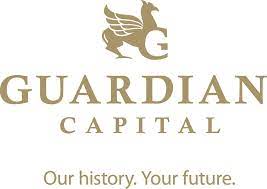Equity Markets
Developed equity markets built upon the strength of recent prior quarters to produce further gains at the halfway mark of 2021. The MSCI EAFE Index rose 3.6% and the S&P 500 benchmark gained 7.0% in the quarter, both in Canadian dollar terms, on rising optimism about “the beginning of the end” of the pandemic that is allowing some major nations to conclude their lockdowns. This brings the Canadian dollar midyear gains in these markets to 5.8% and 12.0%, respectively, and both benchmarks are now up from prior-pandemic levels.
For the second consecutive quarter, Canadian investors did best by investing in their own backyard, with the domestic S&P/TSX Composite index rising 8.5% and bringing returns to 17.3% so far in 2021. Market gains were broad-based this quarter across the globe, with the majority of sectors in every region posting gains, and the only notable point of weakness being the Health Care sector in Canada, which fell 10.7% as it reversed a portion of the gains made early in 2021. Information Technology, a leading sector over the past few years, returned to fine form in the quarter and outpaced the broader market in every region. Strength in the price of crude oil helped Energy stocks continue to claw back losses from prior years, and the sector is now up 37.0% in Canadian dollar terms in both Canada and the US so far this year. The Canadian dollar continued its recent strengthening trend against the US dollar, although with only a modestly negative impact on international market returns for Canadian investors this quarter.
Having now lapped the worst of the 2020 pandemic impact, global stock markets sit at a juncture balanced between vaccine rollout benefiting some economies while others contend with a surge in virus variants, raising the spectre of another wave of lockdowns.
A major issue across securities markets would seem to be inflation: prices for many goods remain strong due to production and shipping bottlenecks, although these are expected to ease, while it remains unclear to what extent labour inflation may start to infiltrate the economy as businesses reopen and rehire. This remains a key point to monitor, as the ultimate trajectory of inflation will have a direct bearing on the path of interest rates and, in turn, valuations ascribed to stock prices.
Fixed Income Markets
After a rough start to the year, fixed income markets took a turn for the better in Q2 as the selling pressure seen earlier in mid-to-longer-dated bonds abated against signs that inflation pressures could well prove to be more transitory than previously assumed.
The Bank of Canada announced on April 21, 2021, that it would begin the process of tapering its asset purchases and offered guidance that it could be positioned to raise rates in the middle of next year (versus 2023 previously). This announcement, combined with the hawkish set of economic forecasts from the US Federal Reserve at the end of June (that pointed to the start of the tightening cycle being brought forward), pushed front-end rates up, flattened the yield curve, and weighed on the performance of the asset class as a whole.
The benchmark FTSE Canada Universe Bond Index rose 1.7% over the three months ended June (paring its year-to-date decline to -3.5%) with the FTSE Short-Term Index (+0.1%) underperforming, while the FTSE Mid-Term Index matched the broad market’s performance (+1.6%) and the FTSE Long-Term Index outperformed (+3.7%, though it remains down 7.4% in its worst first half of a calendar year since 1994). Government bonds performed largely in-line with the overall index (+1.8), while investment grade corporate (+1.3%) underperformed and high yield bonds (+2.6%) outperformed against the broadly improving macro backdrop.
Looking forward, further progress on vaccination and the resultant reopening of economic activity will go some way to reducing uncertainty over the growth outlook, which in turn would firm expectations of monetary policymakers embarking on the path of removing crisis-era levels of stimulus sooner rather than later — but while that points to higher being the path of least resistance for market interest rates, it remains likely that the move will be more gradual than the jump registered at the outset of this year.
Commentary
After what the world has endured over the past 15 months, investors could be forgiven for taking a breather and revelling in the relative calm.
The tremendous progress so far with vaccination rollouts combined with lockdown efforts has brought COVID-19 infection rates down sharply. In addition, continued developments of therapeutics have resulted in a material decline in worst-case outcomes for those afflicted with the disease.
This improved management of the pandemic has raised confidence in moving forward with the removal of restrictions on day-to-day life and reopening of the economy — after a long winter of isolation at home, people are finally able to regather in public spaces in the warmer weather.
Add to this the reduced tension and anxiety from the general global geopolitical backdrop, and the result is a significant reduction in the level of uncertainty compared to this time last year.
This more sanguine backdrop is echoed in financial markets where risky assets (such as equities and credit) have continued their steady ascent to new record highs while safe-haven investments (government bonds) have fallen out of favour and gauges of market volatility are approaching post-crisis lows.
While this environment represents a welcome change from the experiences of much of the last year, it is important to avoid complacency as we settle into the lazy dog days of summer.
For sure, risks have abated but they are far from gone.
The pandemic, unfortunately, is not yet over, and the presence of known and possibly developing, variants have the potential of hindering economic reopening plans.
As it stands, the economic recovery appears to be on firm footing but a lot of good news has already been priced-in, which raises the possibility for near-term disappointment if progress containing the pandemic and/or the growth trajectory is hindered in some manner.
Further, economies worldwide are being supported by unprecedented degrees of monetary and fiscal stimulus that will not be sustained forever — indeed, central banks have already begun to lay the groundwork for normalizing their policy stances in recent months, while governments are beginning to grapple with how to best approach their yawning crisis-induced deficits and elevated debt loads.
With that said, even if the positive baseline expectations are met and the recovery remains on track while policy support remains in stasis for the near term, investors need to be aware that past performance does not guarantee future results. Just because a traditional 60/40 balanced portfolio has been able to generate returns of nearly 20% over the last year does not mean that you can rely on those types of gains being sustained going forward. Chasing more speculative investments in search of such gains necessarily means assuming risks that may not be well understood or fully visible in the current environment.
As such, it may be worthwhile to take advantage of this relative lull in the market action to touch base with your Portfolio Manager, your key partner in the wealth management process, to review your long-term investment goals and personal circumstances.
History shows that these periods of relative calm do not last forever and it is always better to prepare for the inevitable next storm before clouds start to form on the horizon — time and again we have seen that a sound investment strategy, tailored to your personal objectives, is the best way to deal with whatever weather conditions await us.
This document includes information and commentary concerning financial markets that was developed at a particular point in time. This information and commentary are subject to change at any time, without notice, and without update. This commentary may also include forward looking statements concerning anticipated results, circumstances, and expectations regarding future events. Forward-looking statements require assumptions to be made and are, therefore, subject to inherent risks and uncertainties. There is significant risk that predictions and other forward looking statements will not prove to be accurate. Investing involves risk. Equity markets are volatile and will increase and decrease in response to economic, political, regulatory and other developments. The risks and potential rewards are usually greater for small companies and companies located in emerging markets. Bond markets and fixed-income securities are sensitive to interest rate movements. Inflation, credit and default risks are also associated with fixed income securities. Diversification may not protect against market risk and loss of principal may result. This commentary is provided for educational purposes only. It is not offered as investment advice and does not account for individual investment objectives, risk tolerance, financial situation or the timing of any transaction in any specific security or asset class. Certain information contained in this document has been obtained from external parties which we believe to be reliable, however we cannot guarantee its accuracy. Guardian Capital Advisors LP provides private client investment services and is a wholly-owned subsidiary of Guardian Capital Group Limited, a publicly traded firm listed on the Toronto Stock Exchange.
Get in Touch
Want to discuss your family business? Set up an appointment at your convenience:
Please stay safe and stay healthy.
Vern Fischer






